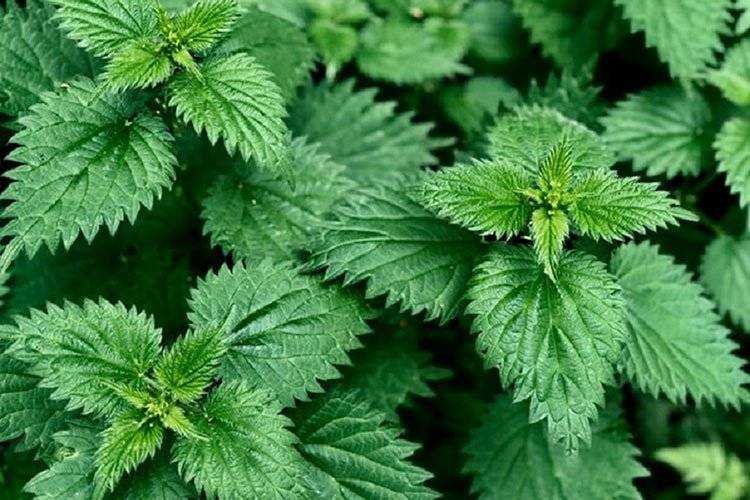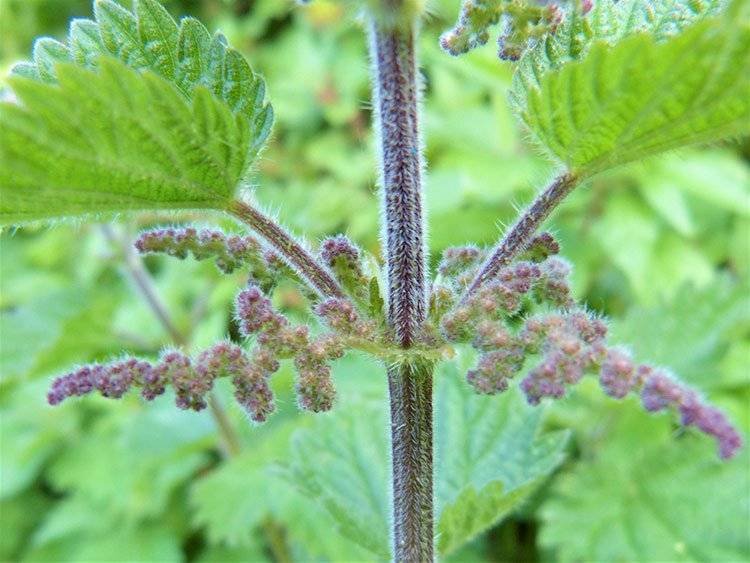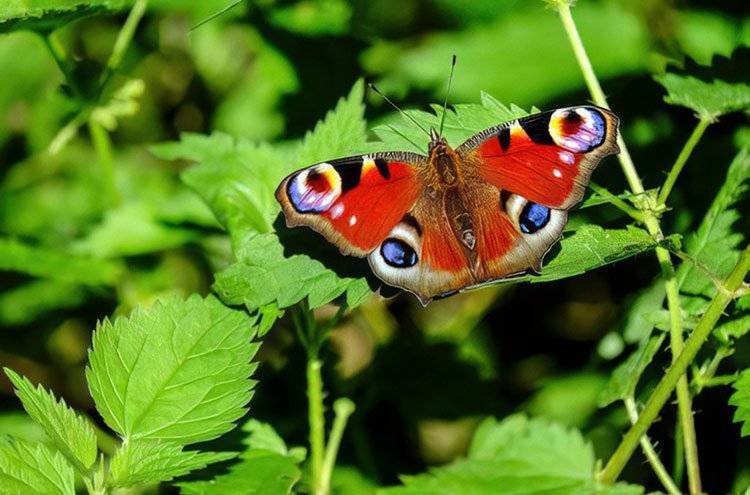Beautiful Plants For Your Interior
Stinging Nettles

Quick Weed Facts:
Shape: Small, green heart-shaped, toothed leaves growing in opposite pairs along the stem. Has catkin-type flowers, with leaves and stems covered in ‘hairs’ both stinging and non-stinging.
Colour: Flower Brown/Green Catkin
Family: Urticaceae Genus: Urtica
Main Species: Stinging Nettle (Urtica dioica)
Other Names: Common Nettle, Burn Nettle, Stinging Nettle, Nettle Leaf, Stinger
Most Active Growing: May – September
Weed Type: Perennial
Stinging nettles are hardy perennials that develop into 4-6ft (1.2-2m) tall masses. Stinging nettles are widespread almost everywhere but particularly in Europe, North America, and North Africa.
To avoid the more painful way of identifying stinging nettles (Urtica dioica) when weeding check the stems, which are covered in ‘stinging’ nettle hairs, which make them quickly noticeable; also look for their drooping, brownish-green tassle-like flowers from around May to September, and their oval, toothed green leaves. As a result, stinging nettles are usually considered to be a common UK weed.
With all that said, if you have the room to leave some stinging nettles, they can be a superb food and habitat source for Red Admiral butterflies (Vanessa atalanta) and the caterpillars of the Small tortoiseshell (Aglais urticae) and Peacock butterflies (Aglais io)

Easily Identify Stinging Nettles (Urtica dioica) By Their Fine Hairs And Catkins
Stinging Nettle Seeds Are The Problem
The stinging nettle (Urtica dioica) is a perennial, herbaceous plant with creeping roots that grow with creeping surface stems that root at the nodes and produce aerial shoots in ‘loose’ new soil that has high phosphate levels.
Nettles are very tolerant of harsh climates, growing readily from seeds. They are either male or female plants, and when both sexes are close, female plants generate a lot of seeds.
How To Get Rid Of Stinging Nettles
Natural Control
If a non-chemical stinging nettle treatment removal method is to be used then it should be implemented in mid-summer, or earlier, but prior to ‘seed fall’ to prevent any future infestations.
Nodes on ‘creeping’ stems should be eliminated to prevent regrowth. Young nettle plants may also be eliminated by vigorous hoeing.
Digging out and removing plants after they’ve been cut down is the ‘optimal’ approach, and their removal using this method may be done at any time of year.
It is however unlikely Perennial nettles will be a persistent problem in regularly cultivated areas, except perhaps where there is a residue of nettle seeds in the soil, or perhaps your cultivated area is adjacent to neglected land.
Chemical Control
This method of control is easily undertaken using a glyphosate-based weedkiller like Roundup Ultra or similar. Killing and clearing stinging nettles this way is not difficult but the application can be tricky.
Non-suckering woody plants, such as shrubs or nettles, can be sprayed with glyphosate as long as the stem/bark is brown and woody. Avoiding leaves and other green parts of all garden plants is necessary when using glyphosate, as it is not selective in action.
Glyphosate does not penetrate the soil, so there is no risk that garden plants absorb it through their roots.
NB: However, it’s important to follow the instructions on the manufacturer’s packaging when using glyphosate-based products.
Use this chemical spray treatment shortly before ‘stinging nettles’ flower around June, another treatment may become necessary in September to be sure. The following March/April check all remaining plants and fork or hoe out residue plants and burn.

If You Have Room For Sting Nettles In Your Garden, You Will Attract Some Wildlife Like This Peacock Butterfly
Why Do Stinging Nettles Sting
The bulbous tips of the stinging and non-stinging trichomes (plant hairs) on the toothed leaves and stems break off when brushed against, revealing needle-like tubes that puncture the skin.
These tiny hairs contain irritating chemicals, and the plant injects acetylcholine, formic acid, histamine, and serotonin into the body, causing an itchy, burning rash in humans and other animals that may last up to 12-24 hours. The plant defends itself against large herbivores using this defence mechanism.
Stinging Nettle Treatment
It is important to wash the affected area with soap and water to remove the nettle hairs and alleviate any stinging as soon as possible if you are stung. If no water is available, clean the area with a cloth or other similar material. You may ease local itching and swelling by applying a wet cloth or ice pack to the affected area.
It is also crucial to refrain from scratching or rubbing itchy areas. Antihistamine may help alleviate local itching and swelling, while creams such as hydrocortisone might help reduce inflammation. These creams are available at any local pharmacy.
Stinging Nettle Tea
Stinging nettle tea is prepared by steeping the leaves of the Stinging Nettle (Urtica dioica) in hot water. Vitamins and minerals such as vitamin A, vitamin C, and vitamin K are abundant in this tea.
It is said that the tea infusion in addition to providing potassium, iron, and magnesium, is also beneficial for kidney and prostate conditions. Nettle tea is used to treat urinary tract infections (UTI), kidney, and prostate problems. It promotes good strong urination, which is of course healthy.
How to Make Sting Nettle Tea
First start out slowly by only having one cup of nettle tea to make sure you don’t have any nasty allergic or other reactions to it. Before proceeding further.
FAQs
Are Stinging Nettles Poisonous?
Stinging nettles are generally safe when used correctly. Side effects from ingestion and touch include stomach upset, fluid retention, sweating, diarrhoea, and hives or rash. It is important to handle the plant carefully because it can cause an allergic reaction.
What are the Benefits of Stinging Nettles
Stinging nettles have long been used as herbal medicine. They are considered ‘medicinal herbs’ because they contain an exotic biochemical profile. Stinging nettles have several medicinal properties, including reducing inflammation as seen in the below table.
Below are 6 possible benefits of stinging nettle based on some evidence.
Stinging nettle’s leaves and roots provide a wide variety of nutrients.
Possibly Reduces Inflammation.
Possibly Able to Treat Enlarged Prostate Symptoms.
Possibly Treat Hay Fever.
Possibly Can Lower Blood Pressure.
Possibly Aid in Blood Sugar Control.
When Is The Best Time To Harvest Stinging Nettles?
The best time to harvest stinging nettles is in the spring when the plants are young and tender. It’s important to wear gloves and long sleeves when harvesting, as the nettles can cause a painful rash.
To harvest, cut the top 4-6 inches of the plant, taking care to avoid the leaves and stems. The nettles can be used immediately or dried for later use
Stinging Nettle Tea: Check Out The Possible Benefits
Is Sudocrem Good for Nettle Stings?
Sudocream is normally used for such things as nappy rash, eczema, or dry skin or just to soothe those little bumps, scrapes and bruises. Well, surprise, surprise, some people find that ‘Sudocream’ which now comes in a handy little tube works well on nettle stings as well. Ensuring your hands are clean, gently massage ‘Sudocream’ into the affected area using light, circular movements until the cream dissipates.
Conclusion
Stinging Nettles are found virtually worldwide and to many are easily identifiable. As children most of us out playing have at least once been ‘stung’ and felt the pain of a stinging nettle.
In this post, we have provided great information on identification and ways to remove stinging nettles (Urtica dioica) both naturally and chemically from your garden.
We have identified nettles as not being all bad and have noted many benefits for both humans and wildlife alike.
Disclaimer: The contents of this article are for educational and gardening purposes only. Before using or ingesting ANY herb or plant for medicinal purposes or otherwise, please consult a physician, medical herbalist or other suitable professionals for advice.
Don’t forget to visit our FAQ page for many more gardening tips, tricks and information on a whole host of subjects for the home and garden.
